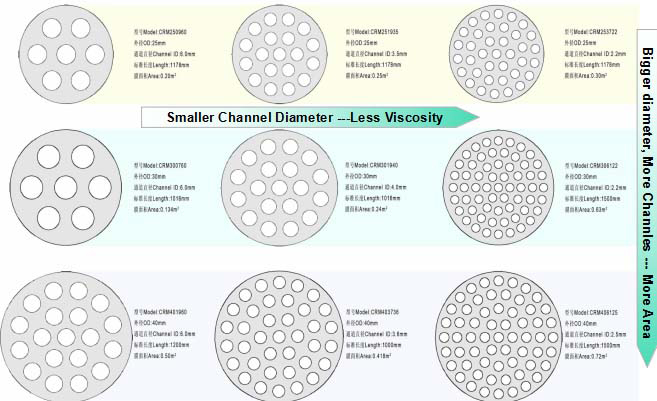Ceramic membrane is suitable for solid liquid separation in harsh conditions in process industry. Nowdays,even though the cost is so high compared with polymeric membrane, ceramic membrane is more and more popularly in food ,petrol chemical , enviromention industry because of its unique perforance. How to select a suitable ceramic membrane for different kind of raw liquid with different process requirement?
>> Pore size & MWCO
For solid liquid separation with very strict requirement, we can use Microfiltration or Ultrafiltration ceramic membrane. Pore size for option can be 200nm, 100nm, 50nm.
For oily water separation like emulsion treatment in machinery industry, 50nm or 40nm is recommended.
For broth clarification, 200nm, 100nm can be optional , but sometimewe need to remove dissolved protein, in that case we have to use 40nm or 50KD or even lower MWCO.
For some cases, we can combine polymeric spiral UF&NF with UF ceramic membranes as a integrated filtration system.
>> Channel size
TFT can offer different kind of membrane with different size of channel, inside diamter of channel can be 1.5mm to 8.0mm.
Small diamter channel is suitable for those liquid with low SS and low viscosity. Power consumption is low.
Big diameter channel is suitable for those liquid with high SS and high viscosity. Power consumption is high.


 316L stainless steel membrane is very strong in alikali situation, though the production cost is very very high compared with other membranes. SiC membranes have higher porosity and higher pure water flux. Both SiC and Al2O3 membranes are suitable for solid liquid separation in process industry. Compared with SiC membrane , Al2O3 membrane has lower price, which can be more acceptable in many cases which is cost sensitive.
316L stainless steel membrane is very strong in alikali situation, though the production cost is very very high compared with other membranes. SiC membranes have higher porosity and higher pure water flux. Both SiC and Al2O3 membranes are suitable for solid liquid separation in process industry. Compared with SiC membrane , Al2O3 membrane has lower price, which can be more acceptable in many cases which is cost sensitive.

